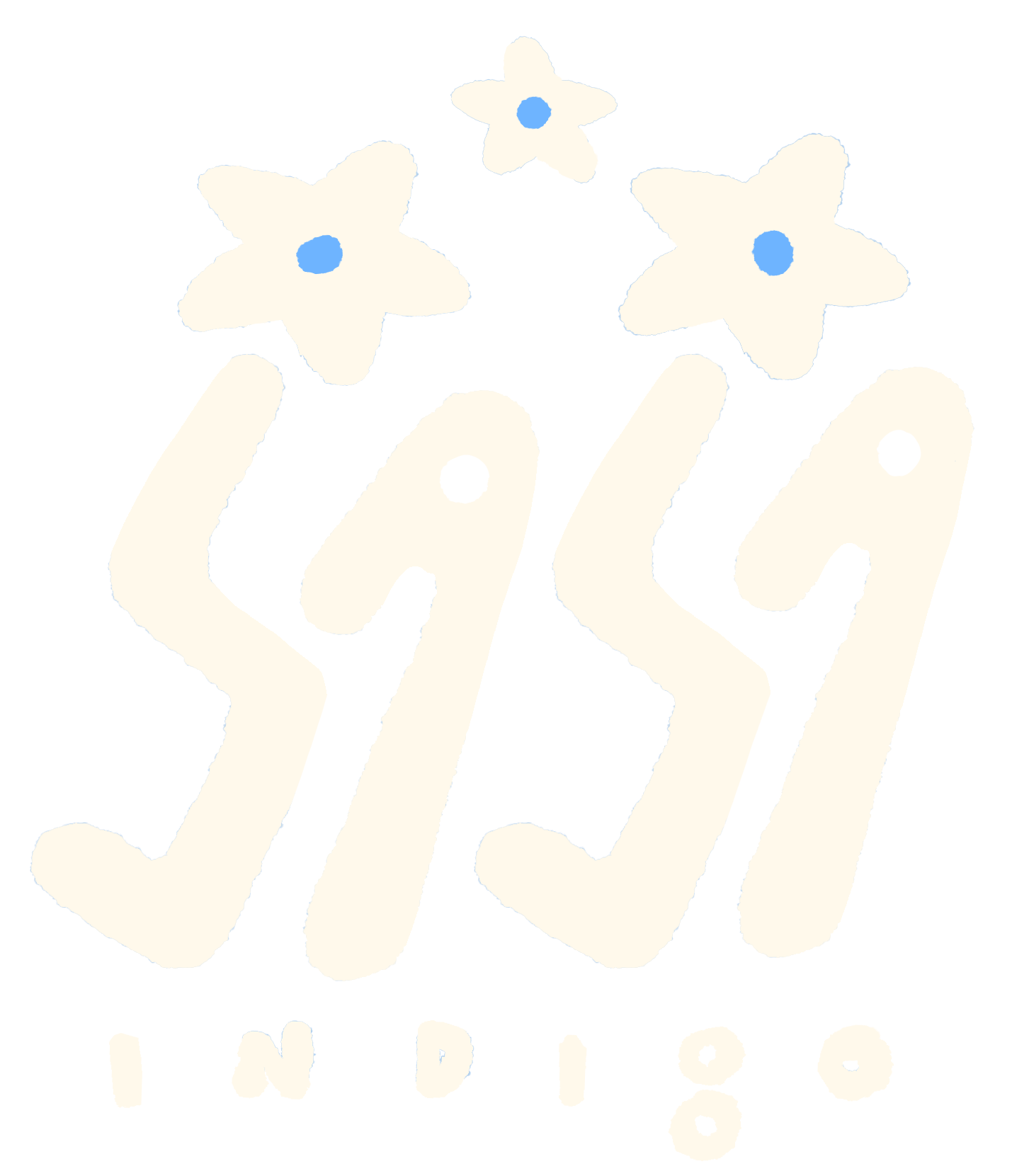Why indigo?
-
Natural Indigo produces colorfast fabrics and a wide range of beautiful blues.
-
Indigo fabric has anti-inflammatory, antibacterial, and anti fungal effects on the skin. Creating a supportive barrier for sensitive skin. Tyrptanthrin and isatin are the active components in indigo.
-
Natural dyeing uses less water, renewable resources and zero chemicals.
What is indigo?
The practice of dyeing fabrics with the plants Indigofera and woad, dates back more than five thousand years ago in many cultures across the world. In the 16th Century, naturally dyed Indigo fabrics were highly sought after for their rich color, longevity, and labor intensive process. Enslaved West Africans were brought to the American South for their knowledge of the Indigo dyeing process, and their labor, making it a major cash crop for the country. The transition to synthetic dye, however did not stop the unethical production of dyed fabrics.
“The chemical formula for natural and synthetic indigo are the same, but the synthetic dye has stuff like formaldehyde in it, and synthetic dyes are all petroleum based," says Hardy. "The way we manufacture and dye clothes isn't good for people or the environment. And slavery is still a thing in the garment industry.”
— Donna Hardy
Synthetic Indigo was first tested and launched in the 19th century, taking over the world’s indigo production. It was cheaper and more stable than natural dye, which made the switch far more profitable. Though, Because of its high demand, labor exploitation was common in countries like India under the British empire.
Processing Indigo
The journey of the indigofera seed to reduced liquid, involves different stages of production. The seeds are planted in early spring and first harvested around midsummer. Leaves are separated from the stems and slowly dried over a few months. Dried leaves are combined with water, wheat & heat to ferment the indigo.
It’s important to understand the history of indigo and its role in modern environmental and labor conditions. Having more natural and eco-friendly options is an important step in becoming more sustainable
in the industry.
Sasa Indigo
In 2022, we started exploring indigo dyeing and Japanese shibori techniques. Interested in connecting further with each other and our heritage, we began using our family name ‘Sasa’. Since then, we’ve learned about the historical, spiritual, and artistic impact of indigo and want to share that with our community.


